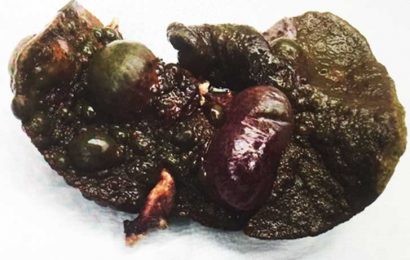(Reuters Health) – More U.S. adolescents, particularly girls, screened positive for depression and suicide risk during the COVID-19 pandemic, a new study suggests.
Researchers examined electronic health records from 91,188 well visits for 68,699 adolescents aged 12 to 21 years old who received primary care at the Children’s Hospital of Philadelphia. A total of 43,504 visits occurred from June 30, 2019 to December 31, 2019 (pre-pandemic period), and 47,684 visits occurred from June 30, 2020 to December 31, 2020 (pandemic period).
Depression screening at primary care visits declined from 77.6% pre-pandemic to 75.8% of visits during the pandemic period (prevalence ratio 0.98), the study found. But the proportion of youth screening positive for depressive symptoms increased from 5.0% during the pre-pandemic period to 6.2% during the pandemic (PR 1.24).
Overall, the proportion of adolescents who screened positive for suicide risk climbed from 6.1% to 7.1% (PR 1.16) over this same period. The increase was steeper among females (PR 1.18) than males (PR 1.09).
“School closures and disruptions of routines, social isolation, concerns about family members’ health, financial stresses, political turmoil and high-profile examples of racial injustice may all have played a role,” said lead study author Stephanie Mayne, an assistant professor of pediatrics at the Children’s Hospital of Philadelphia and the University of Pennsylvania.
“These stressors have been hard on everyone, but our results suggest they may have particularly impacted female teens,” Mayne said by email.
Screenings used the Patient Mental Health Questionnaire-Modified for Teens (PHQ-9-M) to assess depression symptoms and suicide risk, with scores from 9 to 27 indicating moderate to severe depression and scores of 5-10 indicating borderline depression. Three questions on the PHQ-9-M assessed thoughts of suicide or self-harm.
The proportion of teens who reported recent suicidal thoughts climbed from 1.8% before the pandemic to 2.2% during the pandemic (PR 1.22). The increase was greater for females (PR 1.34) compared with males (PR 1.00).
In addition, the increase in recent suicidal thoughts was higher among white youth (PR 1.45) than among teens from other racial and ethnic groups.
The proportion of youth reporting a lifetime suicide attempt also climbed during the pandemic, from 3.1% to 3.5% (PR 1.13).
One limitation of the study is that primary care visits may be less common among adolescents than among younger children, the authors note in Pediatrics. In addition, youth with the most severe mental health symptoms might not have sought treatment in primary care.
Another limitation is that Black adolescents have lower attendance for well visits than white teens, and disparities in attendance might have masked racial disparities in depression or suicide risk outcomes, researchers point out.
Even so, the study provides additional evidence that adolescents’ mental health worsened during the COVID-19 pandemic, said Dr. Stephen Patrick, director of the Center for Child Health Policy at Vanderbilt University School of Medicine in Nashville, Tennessee.
“Even before the pandemic, accessing treatment for mental health conditions was challenging in many communities,” Dr. Patrick, who wasn’t involved in the study, said by email. “As children head back to school, some for the first time in a while, it is important that we support our schools, teachers, and guidance counselors as they work to help our students learn and deal with what has been an exceptionally challenging 18 months.”
SOURCE: https://bit.ly/3fy8snU Pediatrics, online August 4, 2021.
Source: Read Full Article


